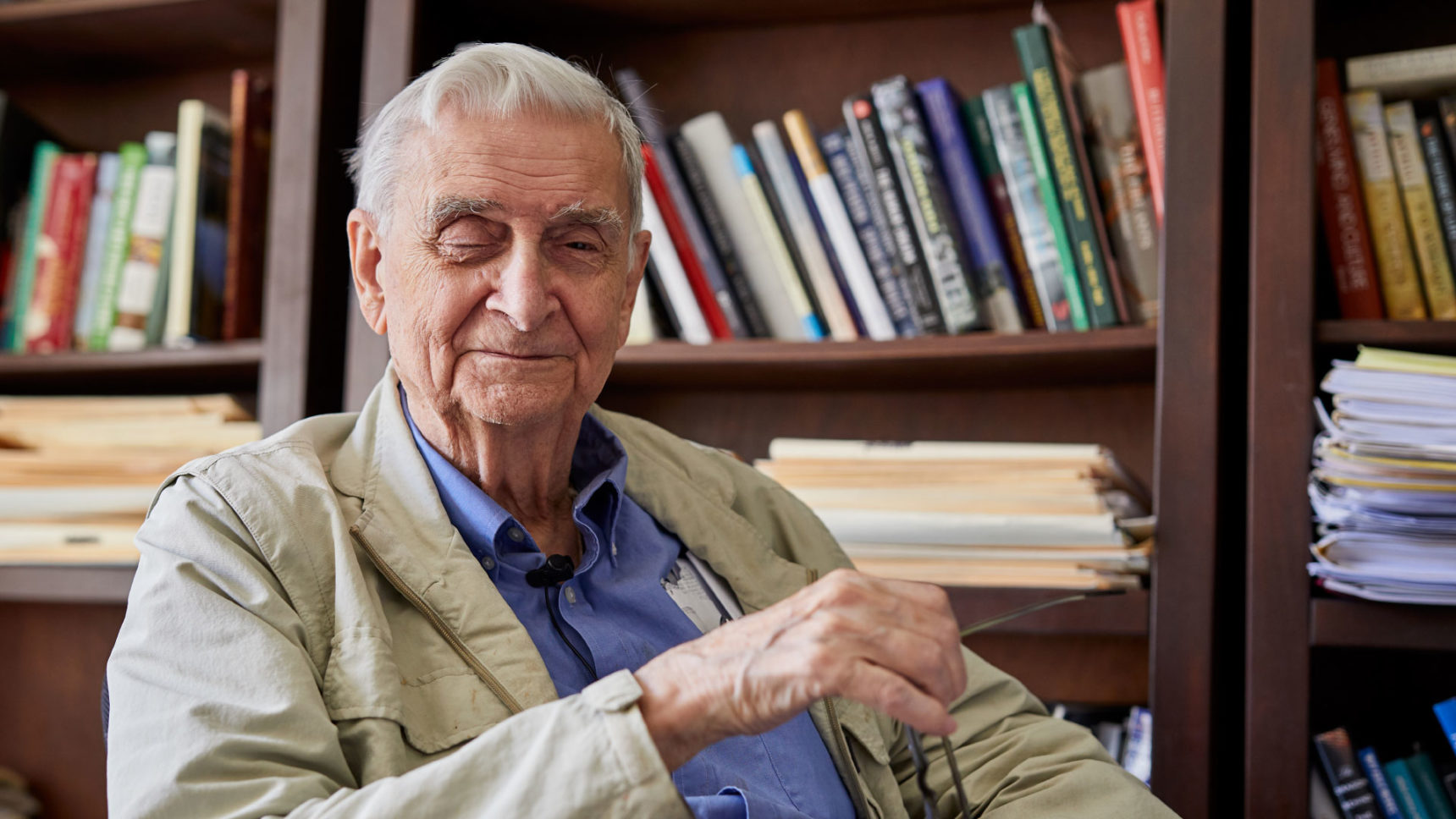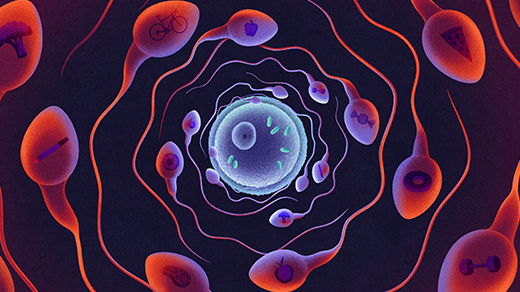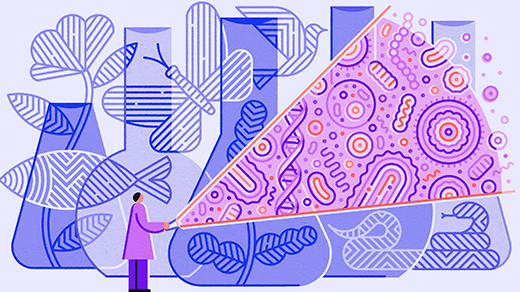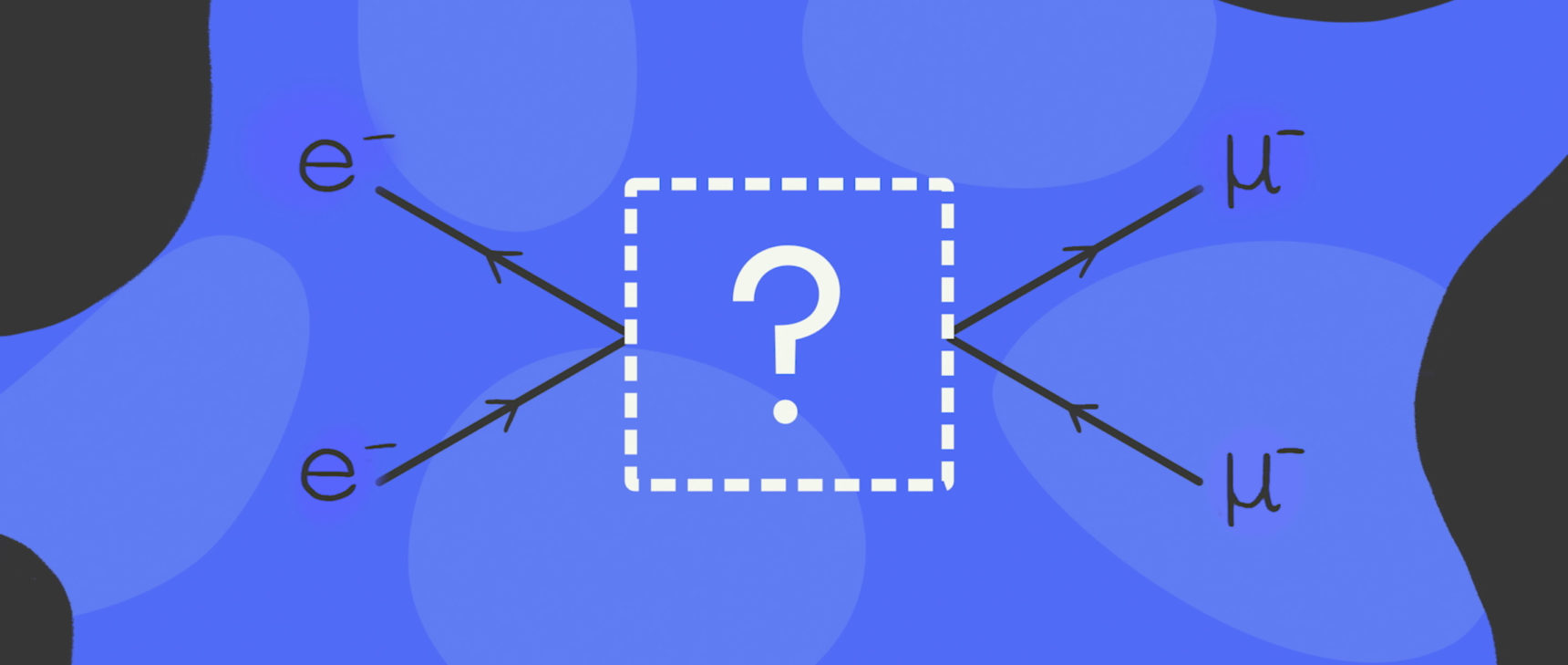In Ecology Studies and Selfless Ants, He Finds Hope for the Future
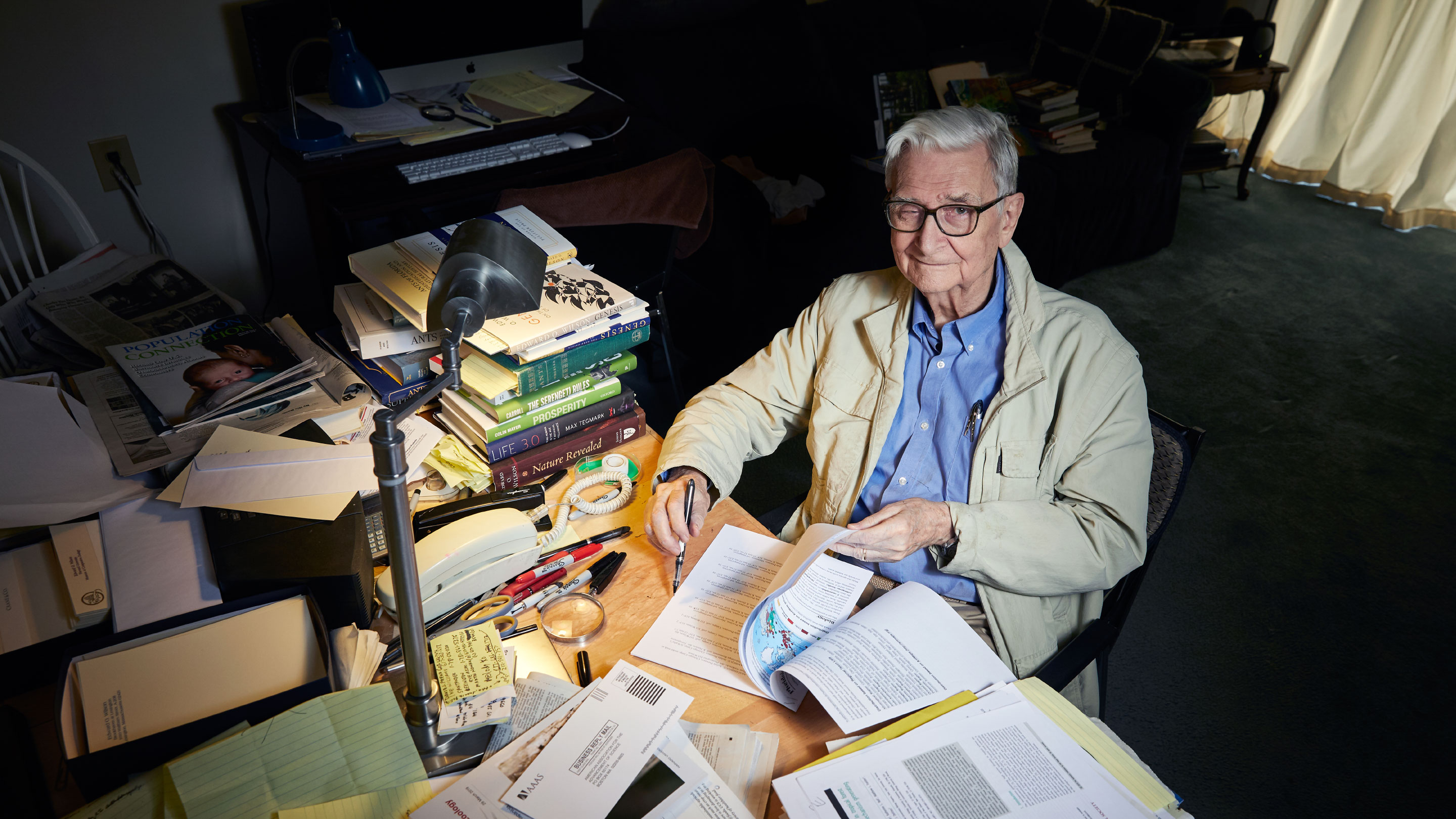
Edward O. Wilson, the influential naturalist, evolution theorist and author who introduced the idea of “sociobiology” in the 1970s, sits in his home office. On the eve of his 90th birthday, he continues to argue for the relevance of evolutionary and ecological science to human affairs.
Ken Richardson for Quanta Magazine
Introduction
No one else in biology has ever had a career quite like that of Edward O. Wilson. One of the world’s leading authorities on ants, an influential evolution theorist and an author who is at once prolific, bestselling and highly honored, E. O. Wilson — his first name comes and goes from bylines but the middle initial is ever-present — has over several decades been at the center of scientific controversies that spilled out of the journals and into wider public awareness. Among activists in the environmental movement, Wilson is the elder statesman, the intellectual patriarch whose writings are foundational to the campaign. Soon to celebrate his 90th birthday, he shows no sign of losing his enthusiasm for the fray.
“I’ll tell you something about Ed — he’s a bit of an intellectual grenade thrower,” observed David Sloan Wilson (no relation), an evolutionary biologist at Binghamton University in New York. “He likes to be a provocateur. That’s unusual in someone as established as he is.”
As a teenager, Edward Osborne Wilson began his career by identifying and classifying every ant species in Alabama, his home state. By the age of 29, Wilson had achieved tenure at Harvard University for his work on ants, evolution and animal behavior. Wider academic fame came to him in the 1960s, when he and the noted community ecologist Robert MacArthur developed the theory of island biogeography, which posited how life established itself on isolated, barren outcroppings of land in the mid-ocean. That study would become a pillar of the then-formative discipline of conservation biology.
In 1975, Wilson made waves with Sociobiology: The New Synthesis, a volume in which he took all he knew about insect behavior and applied it to vertebrates — humans among them. This work suggested that many of the social behaviors observed in people, including virtuous traits like altruism, could be attributed to natural selection. Wilson soon found himself accused of providing intellectual succor to racists and genetic determinists. Demonstrations in the streets of Cambridge demanded that Wilson be fired. The controversy muted only after Wilson won a Pulitzer Prize for nonfiction in 1979 for On Human Nature, his popularized version of Sociobiology.
Until that first Pulitzer, Wilson — a fluid and elegant writer — had mostly published for the academy. From then on, Wilson began addressing the popular audience, translating biology and his own research into an accessible form. Over the years, he’d win another Pulitzer for The Ants (1990), co-authored with the behavioral biologist Bert Hölldobler. He’d also produce a memoir, a novel and more than two dozen nonfiction works, many as contentious as Sociobiology.
Contentious or not, Wilson’s books have mostly addressed one theme: that we must know natural history and evolutionary theory to fully understand humanity’s future on the planet. In his 1986 manifesto Biophilia, for example, he suggested that humans have an innate biological need to be in nature and to “affiliate with other forms of life.” In Half Earth: Our Planet’s Fight for Life (2016), he offered his personal prescription to end the destruction of the world’s biodiversity: Governments should set aside half the planet as a nature reserve.
Two months ago saw the arrival of his latest work, Genesis: The Deep Origins of Society, an update and reconsideration of some ideas on evolution introduced in Wilson’s earlier books. Genesis, he insists, is “one of the most important books I’ve written.”
To discuss Genesis, and to learn Wilson’s thoughts on the new controversies the book might ignite, Quanta visited him last month at his home in Lexington, Massachusetts. An edited and condensed version of that three-hour conversation follows.
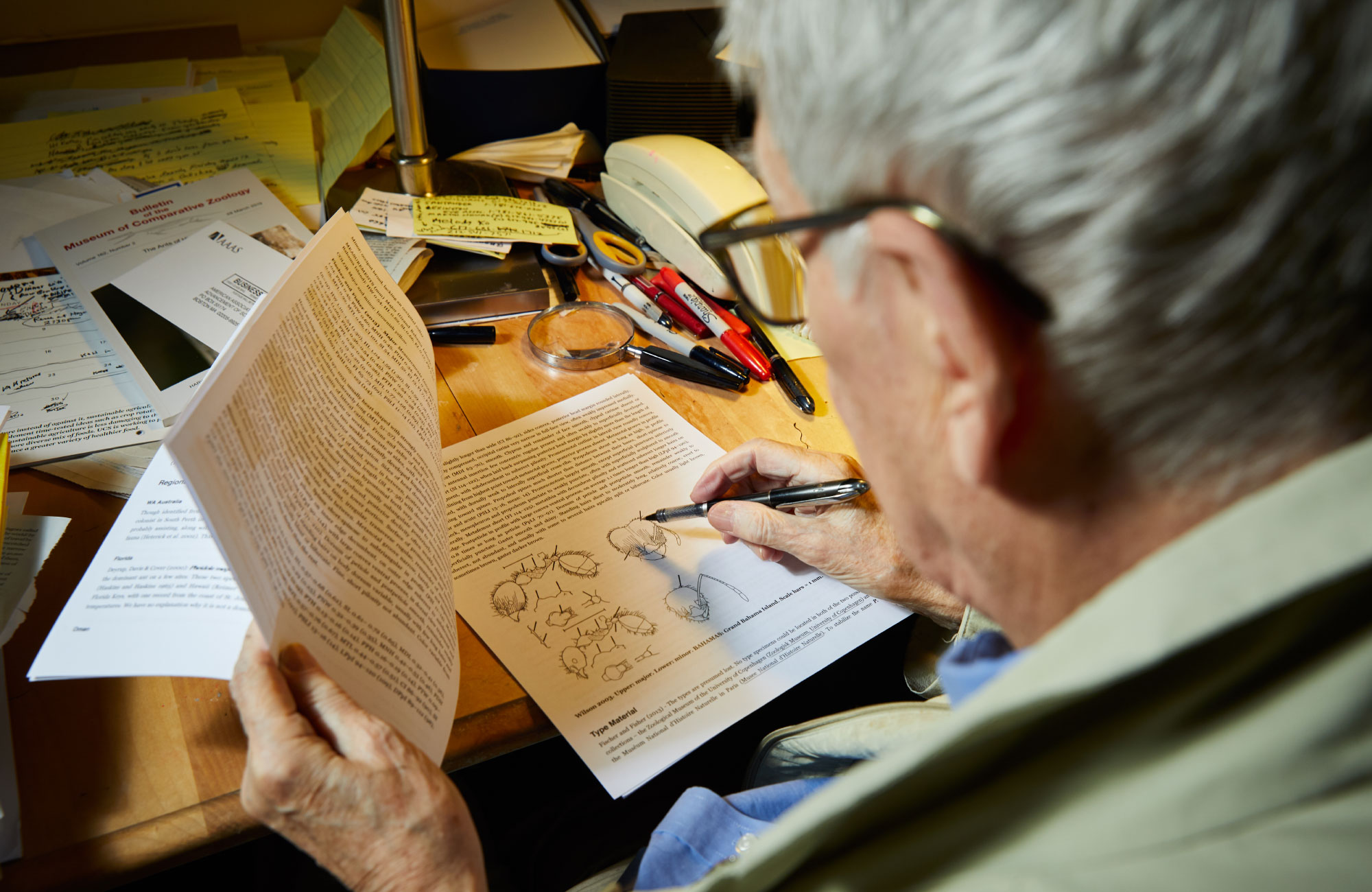
Wilson has for decades been one of the world’s foremost experts on ants. As a teenager in the 1940s, he identified and classified every species of ant in his home state, Alabama.
Ken Richardson for Quanta Magazine
Is it true that you will have a 90th birthday in June?
Yes. And I can’t believe it! I feel like I’m about 35 or 45. I have the same enthusiasm, and I get out of bed in the morning with the same ease or difficulty I always had. I don’t know what happened. When I was 40, I just assumed that I would be doing the same things at 90. And I am.
I write a book a year. I’m still taking natural history trips. This past month I was to go to Gorongosa National Park in Mozambique to do fieldwork on my next book. However, there was this tragedy there, this typhoon that caused so many deaths and so much damage. My friends in Mozambique thought I should wait.
So here I am in Lexington, working on the book, my 32nd. Even if I can’t travel right at this moment, there’s quite a lot I can do on it from here.
What’s its focus?
Ecosystems. Last year, I was asked by the Massachusetts Institute of Technology to give a couple of lectures on ecosystems. In preparing my talks, I saw how little we know about them.
I sort of bumbled my way through, and I came to think that understanding ecosystems and what threatens their equilibrium is going to be the next big thing in biological science. To save the environment, we have to find out how to save the ecosystems.
You’re a bit of a workaholic, aren’t you?
Well, yes. I don’t think being a workaholic is a bad thing. When I was 13 years old, during the first year of the Second World War, there was a shortage of newspaper delivery boys in my hometown of Mobile, Alabama. The 18-year-olds were all at war. So I took a job delivering 420 copies of the Mobile Press Registrar each morning. I’d take all the papers I could, load them on my bike and deliver them. Then I’d go back to the house, get another stack and deliver those. I’d make it home by 7 a.m., eat breakfast and go to school.
I thought that was normal. I’ve always made it my custom to work long and hard. Doing something unusual requires hard work. I’ve written huge books. That’s hard work.
What do you consider your most significant achievements?
Do you want me to brag? [Smiles.] OK, here goes: I created a couple of new ideas and disciplines. The theory of island biogeography became a foundation of modern conservation biology. And then I did things like break the chemical code of the ants where I worked out with chemists and mathematicians how ants speak to one another.
I invented the Encyclopedia of Life, putting out all the information on all known species. I invented, named and gave the first synthesis of sociobiology, which in turn gave birth to the field of evolutionary psychology.
It is said that one of your great contributions has been as a synthesizer of scientific ideas. Accurate or not?
I’d say I’ve been a synthesizer. I love to look at some aspect of nature, learn everything accessible, gather it all together and see if I can screen out something of relevance for a big question.
Give us an example of where you’ve done this.
My fourth book, The Insect Societies, is one. In the 1960s, you had many dedicated entomologists working on understanding social insects — bees, wasps, ants. But we didn’t have a summary of all that was known and what, together, it meant. So in 1971, I published The Insect Societies, which was very successful. In fact, the book was a finalist for the National Book Award, which surprised me. Till then, I had never thought of what I was doing as literature. The book’s success led me to thinking I should next do a similar review of vertebrates — mammals, reptiles, amphibians, fishes.
At that time, you saw a lot of good biologists working on the social behavior of different types of vertebrates — people like [the primatologists] Jane Goodall and Dian Fossey. I thought it time to incorporate their newer research into a more general theory, linking that to what I and others had developed for invertebrates. That synthesis, which was published in 1975 as Sociobiology, included new research on the social behavior of primates.
In fact, at the end of the book, I had an entire chapter on Homo sapiens, a primate that had gone through many steps of evolution. I suggested that a lot of human social behavior could be explained by a natural selection of certain activities and steps, leading to ever more complex group selection.
This wasn’t anything new. Darwin himself had introduced the idea with impeccable logic. What was new was that I was bringing modern population genetics and evolutionary theory into the study of human social behavior. I was seeking to bring the biological and social sciences together so that we could better understand human nature.
When you wrote that final chapter, did you realize you were stepping on a landmine?
At the time, not at all, no. I thought there would be accolades because it would add to the social sciences a new armamentarium of background information, comparative analysis, terminology and general conception that could illuminate previously unexamined aspects of human social behavior.
But the early 1970s, when the book was written, was a time of heated political controversy, much of it related to the war in Vietnam, civil rights and anger about economic inequality. At Harvard, some of my colleagues — I won’t mention their names here — had problems with the idea that there could be instincts in humans. They saw Sociobiology as dangerous, full of potential for racism and eugenics.
Now, my book had nothing to do with racism, but these people forged their own account of how the ideas might be used.
Did they think that Sociobiology could be used to support racist ideas about genetics?
I think you might describe their views that way. In any event, protests began. Things got very bad.
When I gave a talk at the Harvard Science Center on the subject, a mob gathered outside the front of the building. I had to be escorted by police in the back in order to get to the lecture room to give my lecture. When I appeared at a meeting of the American Association for the Advancement of Science (AAAS), some protesters took over the podium to shout their objections, and one of them came from behind me and dumped a pitcher of ice water on my head.
What did you do?
I dried myself off and continued without a break. That was the only thing I could do.
Though you don’t discuss your politics widely, one senses you to be a person of generally liberal beliefs. How did you feel about being characterized as this arch reactionary?
You want to know how I felt? I was afraid this might disturb my family, my wife and daughter. One day there was a mob in Harvard Square, stopping traffic and demanding that the university fire me because of my “racism.” It never did get to my family, though. I knew I was right. I knew I’d just have to weather the storm.
Sure enough, after a while the ideas of the book began to percolate: that genetics is an effective way to understand many aspects of evolutionary biology and behavior. With time, the notion that this book was harmful began to fade, and more scientists wrote favorably about the approach. Some even undertook it in their own work.
What really ended this was two years later when I received the National Medal of Science from President Jimmy Carter. I also wrote and published a book on sociobiology for a broader audience, On Human Nature. It won the Pulitzer Prize for General Nonfiction.
Your recently published book, Genesis, picks up on some of the ideas introduced in Sociobiology. Among the questions you revisit is, “What is human nature?” You also ask, “Did selfishness drive human evolution?” I’m curious: Why write this book now?
The history is that in the early 1960s, I met a British geneticist, William D. Hamilton. He had this brilliant idea that social behavior originated with what is called “kin selection,” or “inclusive fitness,” where individuals within a group behaved altruistically toward those they shared the most genes with.
In kin selection, an individual might sacrifice their possessions, or even their lives, for the benefit of the relative with whom they shared the most genes. Thus, an individual might be more likely to sacrifice for a sibling than a cousin or nonrelatives. The ultimate result of kin selection would be a kind of altruism, though it would be limited to your kin group.
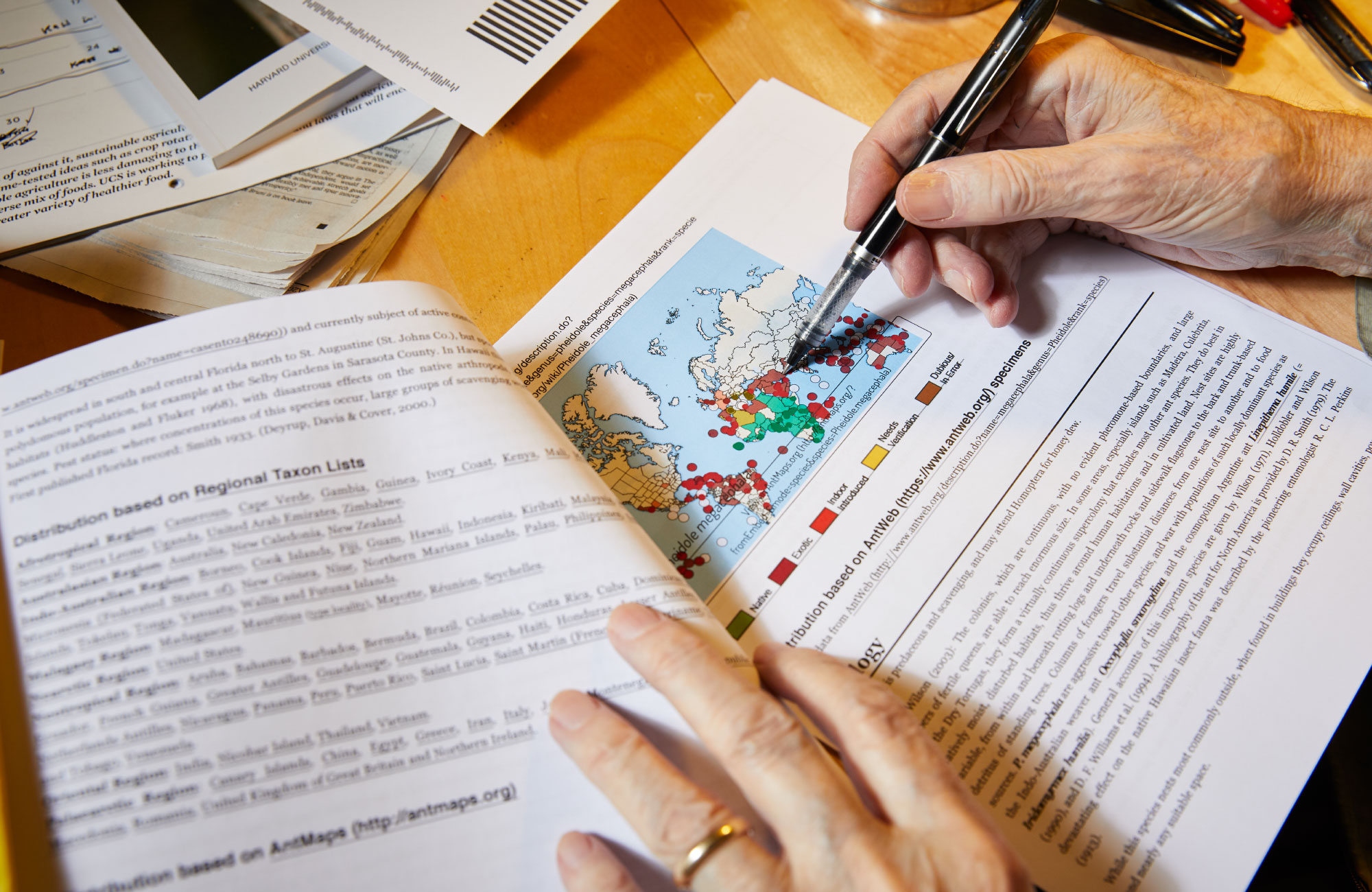
Wilson reviews scientific information relevant to a planned visit to Gorongosa National Park in Mozambique.
Ken Richardson for Quanta Magazine
This idea soon became gospel in the evolutionary biology world. I had helped promote Hamilton’s work, but as time went on, I developed my doubts about it.
Certainly, in my own research, I’d observed sophisticated societies that evolved through group selection, where individuals would be altruistic for the sake of their group’s survival. The ants are an example. In fact, when you think about it, the creatures that dominate the earth are cooperative — ants, termites, humans.
Meanwhile, Martin Nowak, a Harvard applied mathematician, was entertaining similar questions. He and his colleague Corina Tarnita [now at Princeton University] had been preparing their own paper detailing their misgivings about kin selection. We dovetailed our efforts, eventually producing a paper for the journal Nature where we asserted that Hamilton’s theory was fundamentally flawed. We felt it could not explain how complex societies arose.
Your Nature article, published in 2010, kicked off yet another round of academic warfare. A few months after the paper appeared, more than 130 evolutionary biologists — your colleagues — sent a letter to the editor disputing your thesis. Did you think, “Oh no, here we go again?”
Well, Nature’s editors had a different view. Before publication, they’d sent over an editor from London, and we had a whole seminar going over the issues in our paper. They have pretty high standards, and afterwards, they were satisfied that this was a soundly reasoned article — maybe it was wrong in some places that weren’t obvious, but they decided to print it. In fact, they liked it so much, they made it a cover story.
So why the uproar?
I was canceling, or trying to replace, a body of theory that had gained quite a few followers who’d applied it to their Ph.D.s and their CVs. Their careers depended on it. They had written articles and books and given seminars on it.
So they didn’t like me. They said, “It’s so obvious that it’s true. How can you deny it?” We said, “We have math models. Take a look.”
With the publication of Genesis, you are reopening old wounds. Were you looking to go one more round with your critics?
Yes and no. I did want to settle the questions about group selection for once and for all. I thought it was important to put our theory on a firm mathematical and evidential basis. Either that or dispose of it.
Genesis turns out to be one of the more important books I’ve written. The book shows that group selection is a phenomenon that can be exactly defined. I show that it has occurred at least 17 times.
Group selection is a big part of the great transitions of evolution, where life progressed from bacteriumlike organisms to cells with structures inside, and on to simple organisms that were collections of these cells, to the differentiated organisms forming groups and so on. I presented these transitions against the backdrop of group versus individual selection.
Now, there exists a succession of social behaviors that advanced society is based upon. With humans, our advancement was aided by the fact that we were bipedal, with free arms and grasping fingers, and that we first lived on the savanna, where frequent [natural] fires gave us precooked animals to eat. What’s more, we had a good long-term memory and a capacity for high levels of cooperation, with altruism being a strong motivating factor.
The Hamilton theory implies that a mechanism was going on when relatives got together and that they were more likely to form a group because of their shared genes. However, this explanation is filled with mathematical errors and difficulties. Some of our evolutionary success occurred because groups formed, and they tended to be altruistic. Genetic relationships or not, these groups often cooperated, which is part of why we Homo sapiens were successful.
Might you give us “the elevator pitch,” the summary conclusion of your theory?
It’s the way my colleague David Sloan Wilson puts it. He says that within groups, selfish individuals will defeat altruistic ones. However, in conflict, groups of altruistic individuals will defeat groups of selfish individuals.
You know, we’ve heard everything we can possibly hear about the destructive and negative aspects of human nature. There’s a lot of evidence that we evolved because of qualities we consider unifying and propitious for the future.
Dr. Wilson, in person, you are remarkably genial and polite. Why then are you a lightning rod for so much controversy?
Maybe it’s because I prefer ideas that are original over those that are just pleasing.
Your collaboration with Martin Nowak fascinates. Do you often partner with mathematicians?
I do. I think that mathematical models are a good way of thinking about complex quantitative and sometimes qualitative phenomena.
Mathematical models can predict these things with precision. Biological research tests those models. When I’m trying to build an exact testable theory, as I was in Genesis, I’ll give the applied mathematicians my input, and, with luck, they’ll take hold of a problem.
I find this approach exciting. Partly because of my work with Nowak, I’ve come to believe that a whole new science is emerging that will combine natural history in the field with mathematical modeling and experiments similar to those conducted in a laboratory.
This kind of science will be more interesting to the public and attractive to young people who wish to enter careers in science and technology. It will also give us a firmer base on which to save the natural world.
When you are considering a mathematician to collaborate with, what are the qualities you seek?
The same I would look for in a plumber or a building contractor. I want them to be the best at what they do.
Where else in your career have you entered such partnerships?
When I was working out a theory of pheromone transmission — how odors are transmitted among ants and moths — I collaborated with Bill Bossert, an applied mathematician who later received a named professorship at Harvard.
Earlier, I had gotten together with another brilliant mathematically trained ecologist, the late Robert MacArthur of Princeton University. Together we worked out the theory of island biogeography, which helped explain why there were certain numbers of species of different kinds of organisms on islands of different size.
Some of our data there had been collected years earlier when I’d gone to the South Pacific to study ant species. MacArthur was able to come in with the right model to figure out how my data could apply to the new question.
The theory of island biogeography made your career. But as your 90th birthday approaches, do you think about what you’d like most to be remembered for?
[Laughs.] You know, I’ve never really tried to think about that, honestly.
Well, perhaps I’d like to be remembered for obtaining such a great age and staying productive to the end — I’d like to be remembered for those things I’ve put my efforts into. I’d certainly like to be remembered for having created several new disciplines and bodies of theory that had an impact on science.
I don’t wish to be insensitive, but I am wondering if you ever think about death?
Oh, I’ve learned to live with mortality. My favorite line from Darwin was his last line to his family. He said, “I am not in the least afraid of dying.”
And I’m not either. I look on life as a story. It’s a series of events that have occurred, some of them momentous to you and a few other people. You made it through OK, you did this and that. And it could be written as a story. That’s what a life means.
Too many people think of it as a waiting station for the next life up. Or [they’re focused on whether] maybe they’ll find a way to extend this life by another 10 percent or 20 percent. I don’t think that’s a very smart way to live.
So I’m not afraid. I’m just really anxious to finish this book I’m writing now on ecosystems. And to figure out how I’ll get to Mozambique to do the fieldwork.
This article was reprinted on Wired.com.
